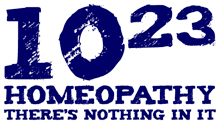Note that some links will break as pages are moved, websites are abandoned, etc.
If this happens, please try searching for the page in the Wayback Machine at www.archive.org.

Also known as 'Zone Therapy' and 'Reflex Therapy'
Related links
“After considering the evidence that I can find, I cannot help but conclude that there is absolutely no justification for claiming that reflexology can be of any help in pregnancy or for sub-fertility. Given the lack of any biological plausibility or credible positive evidence supporting the use of reflexology for fertility issues, selling it to people struggling to conceive seems both cruel and exploitative.” AP Gaylard blog (2nd June 2010)
“ASHA clinical committees have determined that the peer reviewed, published literature to support reflexology as a diagnostic/assessment procedure or for therapeutic intervention of visceral conditions is not established as having diagnostic utility or as being clinically effective, is not professionally recognized, poses a health and safety risk through Substitution Harm and Labeling Effects, and is considered scientifically implausible.” American Speciality Health (revised 18th March 2010) [pdf]
Conclusion: "The best evidence available to date does not demonstrate convincingly that reflexology is an effective treatment for any medical condition." Edzard Ernst, Medical Journal of Australia (September 2009)
“There is no biological or physiological basis for the claim that positions on the feet and hands correspond with bodily organs or that massaging the feet and hands has any effect on bodily organs. Clinical trials of reflexology have not demonstrated its efficacy for any disease or condition.” Campaign for Science Based Healthcare (2009)
“NCAHF advises practitioners and consumers of reflexology to be skeptical of therapeutic claims beyond the ability of foot massage for relaxation. Health professionals should be cautious about recommending practitioners who make, or encourage patients to believe in, unproved claims that reflexology is a valid method for assessing health status or for the treatment of diseases.” William T. Jarvis, Ph.D., National Council Against Health Fraud [NCAHF] (2000)
Concludes that there are no reliable scientific studies proving reflexology's effectiveness as a medical treatment. (Wikipedia)
"There seems to be no evidence in the scientific literature that there are any distinct advantages of reflexology over any other form of foot massage." Skeptic Wiki (The Encyclopaedia of Science and Critical Thinking)
"Reflexology is based on the unsubstantiated belief that each part of each foot is a mirror site for a part of the body." (The Skeptic's Dictionary)
"Reflexology is based on an absurd theory and has not been demonstrated to influence the course of any illness." Article by Dr Stephen Barrett, CANOE
"Reflexology could be regarded as simple sympathetic magic except for one saving factor: treatment is effected by massaging the foot, and that usually feels rather good. As a medical tool for treating specific ailments not connected with the pedal extremities, however, it is useless." Includes a coloured diagram of the soles of the feet indicating specific areas ("reflex points") that are allegedly related to organs and parts of the body. James Randi (An Encyclopeida of Claims, Frauds, and Hoaxes of the Occult and Supernatural)
"Claims that reflexology is effective for diagnosing or treating disease should be ignored. Such claims could lead to delay of necessary medical care or to unnecessary medical testing of people who are worried about reflexology findings." Article by Stephen Barrett, M.D. (Quackwatch)
"Although this study was too small to reach a definitive conclusion on the specific effect of foot reflexology, the results suggest that any effect on ovulation would not be clinically relevant." Fertility and Sterility (18th June 2008)
"Developed in 1913 by a man named William Fitzgerald as "zone therapy", reflexology is based on the New Age definition of the word "energy". Fitzgerald believed that a mystical force field, not understood by science, that he called "bioelectric energy", ran through the body in ten vertical bands corresponding to your ten digits. Modern practitioners call Fitzgerald's mystical energy field "life force", and believe that adepts can manipulate this force field to promote any type of wellness in any part of the body, all through actions that correspond to a conventional foot massage… Another problem with reflexology is that, when used to diagnose a medical problem that does not in fact exist, the practitioner can claim that it is a future problem that's being diagnosed and treated. Time travel combined with medical treatment! If reflexology were to be tested and compared to the results of a real medical diagnosis, this time travel aspect allows its supporters to claim even a clean miss as a direct hit." Skeptoid Skeptical Podcast (28th January 2007)
Foot reflexology was not shown to be more effective than non-specific foot massage in the treatment of psychological symptoms occurring during the menopause. BGOG International Journal of Obstetrics and Gynaecology (September 2002)
Concludes that there is nothing to suggest that reflexology produces any specific benefits for patients with IBS. There is currently no evidence to support its use. P. Tovey, British Journal of General Practice (January 2002)
Cited in a letter to the British Medical Journal (24th March 2001)
No evidence was found that reflexology has a specific effect on asthma beyond placebo influence. Respiratory Medicine (March 2001)
Concludes that despite certain limitations to the data provided by this study, the results do not suggest that reflexology techniques are a valid method of diagnosis. Complementary Therapies in Medicine (September 2000)
"Reflexology goes back to a form of treatment developed by the Indian tribes of North America…..Reflexologists describe their therapy as the "practice of working on reflexes in such a way as to produce a relaxation and response in the corresponding body regions. By applying controlled pressure with the thumbs or index fingers to the reflex points and areas on the feet, the body is stimulated to achieve its own state of equilibrium and good health. Pressure on the reflexes not only affects the organ or region of the body but it also influences the relationship between the different functions, processes and parts." The foot, ear, hand, back and other body locations are believed to represent "holographic reiterations of the anatomy of the body," or a "perfect microcosm or miniature map of the whole body," or a "scanner screen-recording bodily functions." Maps were drawn up where one particular area of the foot's sole is assumed to represent one particular internal organ or organ system. These maps are based on the assumption that 10 "energy zones" run longitudinally through the body. Each foot has five of these lines, and all body organs are believed to lie along one or more of these lines. Reflexologists postulate that a malfunctioning organ or body system leads to deposits of uric acid or calcium crystals. These, in turn, impinge on the nerve endings on the feet or obstruct the lymph flow. Treatment aims at breaking down the deposits so that they can be re-absorbed and eliminated. Reflexologists also believe that treatment can improve blood flow and that reflex points are nerve receptors whose stimulation will induce "deep relaxation" or emit "impulses to all parts of the body." Other hypotheses involve the lymphatic system, suggesting that the body's waste products are removed through reflexology massage, and the general enhancement of the body's inherent balance. All of these theories are unsubstantiated. A scientific rationale for reflexology simply does not exist." Article by Professor Edzard Ernst, The Independent (1st December 1998)
"We undertook a study to determine whether reflexology is a valid diagnostic tool… Our results show that diagnosis based solely on reflexology examination is no better than chance." A. R. White, J. Williamson and E. Ernst, Focus on Alternative and Complementary Therapies [FACT] (1998)




